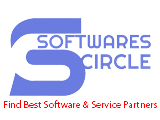On-page refers to the various elements and factors on a webpage that can be optimized in order to improve its ranking and visibility in search engine results pages (SERPs). On-page factors can include elements such as the page’s content, meta tags, internal linking, URL structure, image optimization, and more. By optimizing these on-page elements, website owners and digital marketers can improve the relevance and quality of their website content, making it more likely to appear in top positions on search engine results pages for relevant keywords and queries. On-page optimization is an important aspect of search engine optimization (SEO) and is essential for achieving organic traffic growth and improved online visibility.
Optimizing on-page elements is crucial for improving your website’s search engine ranking and user experience.
Tips To Optimize Your On-Page Elements
Title tag
The title tag is one of the most important on-page elements. It should include your primary keyword and be no more than 60 characters. Make sure it accurately reflects the content on the page.
Meta description
The meta description appears under the title tag in search results. It should be around 150-160 characters and provide a compelling summary of the content on the page.
Headings
Use H1 tags for the main heading on the page and H2 tags for subheadings. Include your primary keyword in at least one heading.
Content
Your content should be high-quality, informative, and engaging. Include your primary and related keywords naturally throughout the content.
Connect with SoftwaresCircle and Increase Your Business Online Visibility to Millions of Users
Get ListedImages
Optimize your images by compressing them for faster loading times, using descriptive filenames, and adding alt tags that include your primary keyword.
Internal links
Use internal links to connect related content on your website. This helps search engines understand the structure of your site and improves user experience.
URL structure
Your URL structure should be simple and include your primary keyword. Avoid using long, complex URLs that are difficult to read and remember.
Page speed
Optimize your website for speed by reducing image sizes, using a content delivery network (CDN), and minimizing HTTP requests.
Mobile optimization
Ensure your website is mobile-friendly by using responsive design and optimizing for different screen sizes.
By optimizing your on-page elements, you can improve your website’s search engine ranking and provide a better user experience for your audience. Remember to always focus on providing high-quality content that adds value to your readers.
